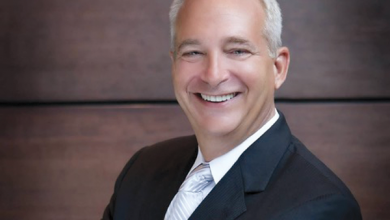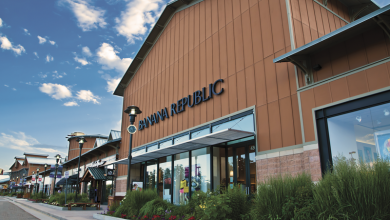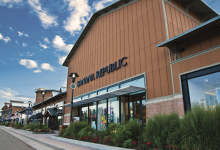It was a very good year – maybe

Wrapping up fiscal 2015 retail year
BY JAN WONDRA –
STAFF WRITER –
For better or worse, we are a consuming economy.
Our economic well being depends not on saving but upon people buying things, from dresses and makeup, toothpaste and beer, fried chicken and paper plates, to cars and tires.
When we’re feeling well-off, we tend to buy more, and usually we buy better, trading up to higher-end brands and bigger cars. Trend watchers say that when we feel really good, that’s when men’s clothing sales finally see improvement. That said, this holiday season was a mixed bag. Where some strong national brands saw major growth, other brick-and-mortar store (B&M) brands struggled.
Retail sales for the Christmas holiday, according to the National Retail Federation (NRF), increased a disappointing 3 percent nationally, which was below the predicted 3.7 percentage points, coming in at $626.1 billion. The trouble began Thanksgiving weekend when retail sales dived 10 percent year-over-year and struggled from then on. The growth was the slowest since 2013 when sales in the year-end period rose 2.7 percent and far short of last year’s results when sales rose 4.1 percent.
Nationally, the weather played a big role, as the northeast and mid-Atlantic bathed in 70-degree weather, while El Nino pummeled the western half of the U.S. A drop in foreign tourists due to the strong dollar also contributed to flat sales in tourist-focused areas.
While retail stores struggled, eCommerce and other non-store holiday sales grew 9 percent to $105 billion, continuing a shift from B&M sales to online purchasing.
Retail fiscal years typically end Jan. 31, allowing for a month of returns to balance the pre-holiday sales. Depending upon the retail type, according to the NRF, the holiday season makes the year, accounting for anywhere from 19 to 28 percent of a retailer’s annual volume. Several retailers, including the world’s largest retailer, Walmart, have already reported that sales for the period fell well short of expectations.
Store closures multiply
Walmart recently closed 154 stores in the U.S., part of a broader plan to close 269 stores around the world. Two in Colorado have already closed: Walmart’s Neighborhood Market at 8196 W. Bowles Ave in Littleton and at 2253 S. Monaco Parkway, just south of Evans Avenue in Denver,
Macy’s Inc. had its worst holiday sales since 2008, resulting in a February announcement that it is closing 40 stores nationwide, eliminating 4,500 jobs. None of the stores are in Colorado. It blamed the shortfall on the warm weather.
Sears, which also owns Kmart, is accelerating the closure of some 50 stores. It saw overall same-store sales fall 9.2 percent in 2015, with Sears stores leading the decline. Comparable store sales in the fourth quarter dropped 6.9 percent at Sears and 7.2 percent at Kmart. Gap Inc. said December sales fell 5 percent from the year earlier.
But not all was gloomy. Notably, many brands with high appeal to the millennial generation did well. L Brands Inc., owner of mall stalwarts Victoria’s Secret and Bath & Body Works, posted an 8 percent jump in sales at existing locations and said they had “our best December ever.”
Retail sales aren’t tracked as an industry cluster within Colorado for the nine-county metro Denver area or by individual counties, so arriving at how the Denver south area did is speculative at best. (See related story on local municipal sales tax uses.) Park Meadows, which saw its foot traffic increase, says they have benefited from their premier store lineup.
“We’ve become an excellent retail epicenter,” said Pam Kelly, the mall’s senior general manager. “We have so many stores that range from being the No. 1 store in a chain to being in the top 10 or top 10 percent in the country, so we get the traffic.”
Cabela’s, which just entered the Denver market in August with its new retail center in Lone Tree, is bullish about the future.
“We’re very pleased with our results so far,” said Marketing Manager Mark Gebert-Stewart.
 Retail jobs are critical to local economy
Retail jobs are critical to local economy
Retailers are small businesses – 98.6 percent of all retailers employee 50 or fewer employees. According to the NRF’s Retail Impact study, nationwide retail supports 42 million jobs, or nearly one in four American workers and directly provides 29 million jobs and $822.5 billion in labor income. This makes it our nation’s largest private sector employer. In Arapahoe County, retail jobs total 41,895 for sales and retail occupations.
Retail sales contribute $2.6 trillion each year to our nation’s gross domestic product and functions as a daily barometer for the nation’s economy. The category has fought its way back from the great recession, adding more than 800,000 jobs since 2009, during the depths of the recession. While most retail jobs are still not considered living-wage jobs, according to the NRF’s Opportunity Index, nearly 85 percent of retail workers have earned raises this past year, indicating that the anticipated economic ripple is finally beginning to reach some of the country’s lowest-paid workers – at least until the generally disappointing holiday season occurred.





